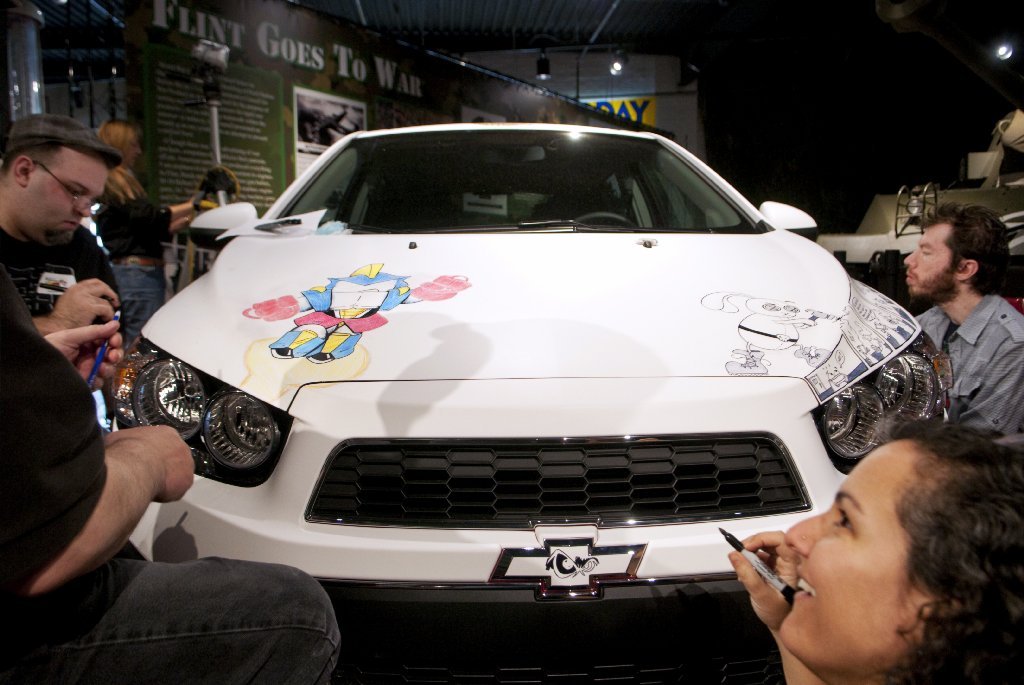By Ron Fonger | Flint Journal
FLINT, Michigan — A lot of cars have been built in Flint but none have been finished quite like this.
A handful of comic book artists from the Flint area have started to transform a 2012 Chevrolet Sonic into a work of art and no one, including the creators, is sure what the end product will look like until they finish Thursday.
“You want a door? Take a door,” Flint Comix Editor-In-Chief Randy Zimmerman said Monday, just hours after the first group of artists started their shift of work on the Sonic.
Wrapped in an extra skin that can handle markers, colored pencil, and paint, the Sonic is on display at the Buick Gallery and the work continues Thursday.
Within a few hours Tuesday, a golden-green dragon was taking shape on the roof of the four-door hatchback , Bludgeoner the Bunny Butcher stretched across a front fender in bbasic black and white, and a set of eyes peered out from the signature Chevy bowtie logo on the front of the Sonic.
General Motors spokesman Tom Wickham said the idea for teaming up Flint Comix and the Sonic came from a similar event held this fall at New York Comic Con, an annual gathering of some of the most popular comic book artists and their fans.
Wickham said the compact Sonic makes an interesting canvas but said the real reason for the event is to bring attention to the new small car and to give comic artists a new audience.
“I’ve always liked comics, and a lot of these artists don’t get exposure like this,” he said. “What we are really hoping is that people come see what’s being done.”
Flint Comix artists get exposure now through the monthly comics and entertainment newspaper, which is available free at more than 250 outlets and distribution boxes in the mid-Michigan area.
Zimmerman started the publication three years ago, and Publisher Ted Valley said his artists haven’t taken on a project quite like this before but he said he couldn’t resist because both the car and the paper have a shared connection.
“Cars and comics: What do they have in common? Flint,” Valley said.
Read the full article: here.

